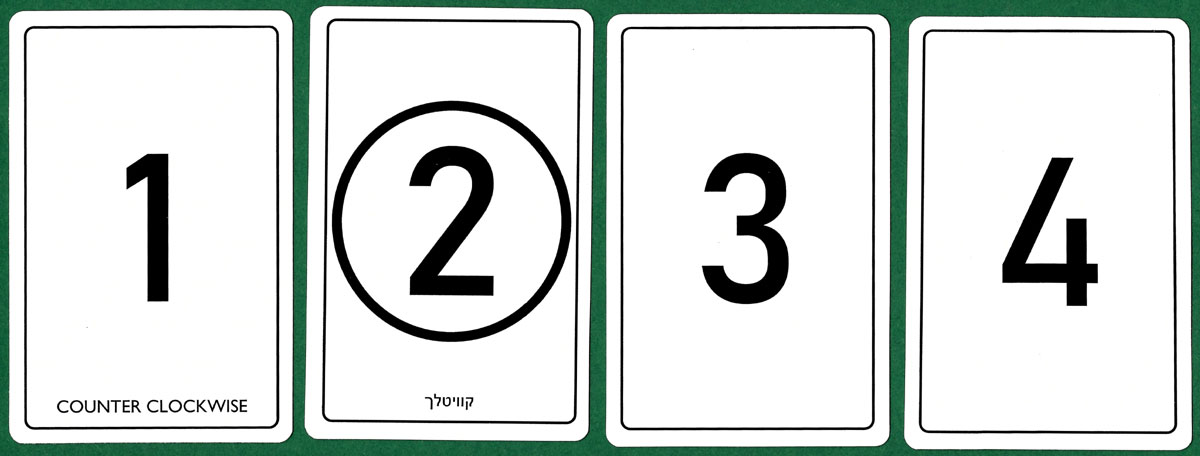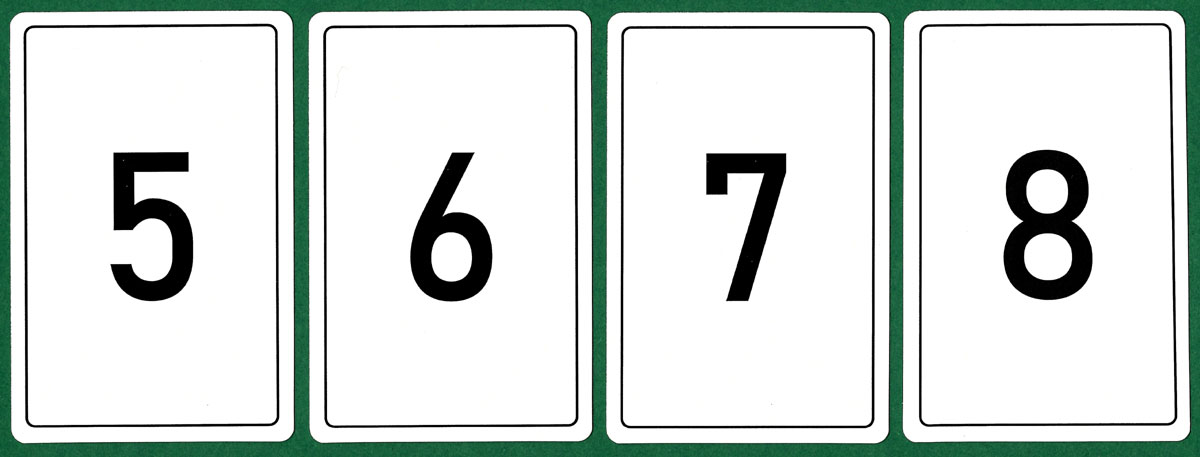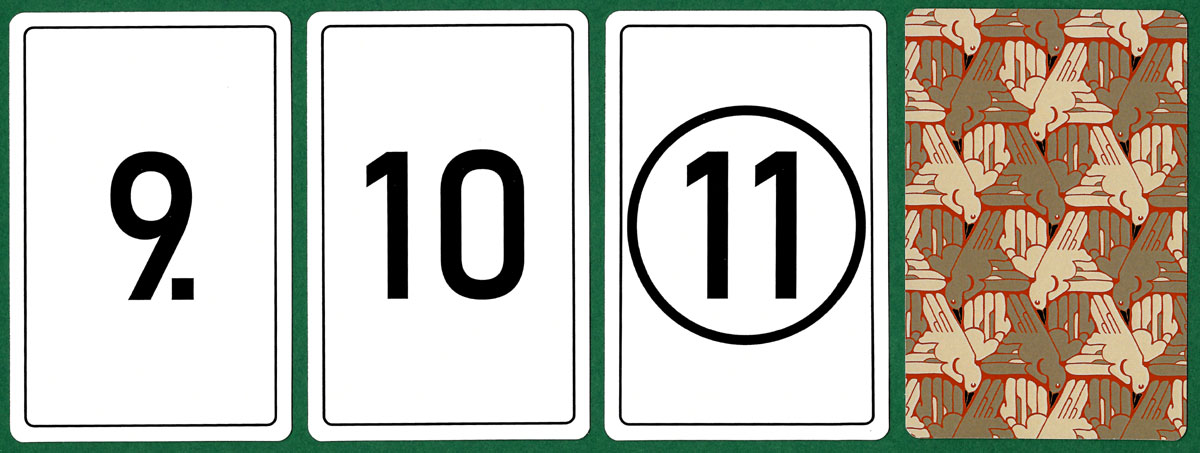The traditional Central European card game Kvitlech (also spelled Kwitlech, Kvitlekh, Kvitlakh, Kvitlach, Quitli, and Quitlok) originated in Jewish communities in Galicia (Halič), a poor north-eastern region of the Austro-Hungarian Empire, around the year 1800. From there it spread through Jewish communities across Central Europe and eventually to the United States. In Europe, the game more or less disappeared with the onset of the Second World War.
The cards were originally handmade using simple slips of paper marked with numbers. As the game became more widespread it began to appear in the catalogues of larger playing card manufacturers. The deck is commonly associated with the company Piatnik, though it was also produced by other manufacturers.
The game uses a deck of 24 cards featuring the numbers 1 to 12, each appearing twice. Cards numbered 2 and 11 are graphically highlighted due to their special functions during play. The number of cards in historical decks may vary. The cards are used for a specific variant of Blackjack/Twenty-One. They can, of course, also be used to play games such as Pairs (Memory) or War.
The deck published by Counter Clockwise presents a modernised version of the original minimalist design. It uses a sans-serif numeral font, with values 2 and 11 highlighted by a simple circle. The reverse side of the cards features the Tausend Raben (English: A Thousand Ravens) pattern by Koloman Moser, dating from the early 20th century, which forms an interesting contrast to the face side of the cards. • See the box



Above: Kvitlech cards published by Counter Clockwise, Czech Republic, 2024. 24 cards in box.
References
Wikipedia : Kvitlech►
Pagat.com : Quitlok►